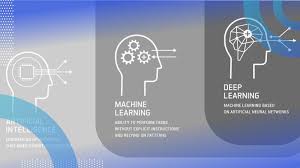Understanding Data Analytics: Transforming Information into Insight
In today’s digital age, data analytics has become an indispensable tool for businesses and organisations striving to gain a competitive edge. By transforming raw data into meaningful insights, data analytics empowers decision-makers to make informed choices that drive growth and innovation.
What is Data Analytics?
Data analytics refers to the process of examining datasets to draw conclusions about the information they contain. This process involves various techniques and tools that help in discovering patterns, identifying trends, and making predictions.
Types of Data Analytics
- Descriptive Analytics: This type focuses on summarising historical data to understand what has happened in the past. It provides context by using visualisations like charts and graphs.
- Diagnostic Analytics: Going beyond mere description, diagnostic analytics delves into the reasons behind certain outcomes. It helps identify causal relationships by exploring data correlations.
- Predictive Analytics: By using statistical models and machine learning algorithms, predictive analytics forecasts future outcomes based on historical data. It’s widely used for risk assessment and strategic planning.
- Prescriptive Analytics: The most advanced form of analytics, prescriptive analytics suggests actions you can take to affect desired outcomes. It involves complex algorithms and simulations to recommend optimal strategies.
The Importance of Data Analytics
The value of data analytics lies in its ability to provide actionable insights that can lead to significant improvements across various aspects of a business:
- Enhanced Decision-Making: With accurate insights at their disposal, organisations can make decisions based on evidence rather than intuition.
- Operational Efficiency: Data analytics helps identify inefficiencies within processes, enabling businesses to streamline operations and reduce costs.
- Customer Insights: Understanding customer behaviour through data analysis allows companies to tailor their products and services more effectively.
- Risk Management: By predicting potential risks, businesses can implement proactive measures to mitigate them before they become issues.
The Role of Technology in Data Analytics
The advancement of technology has significantly enhanced the capabilities of data analytics. Tools such as artificial intelligence (AI), machine learning (ML), big data platforms, and cloud computing have revolutionised how organisations analyse vast amounts of information quickly and accurately.
A well-implemented AI system can automate routine analysis tasks, freeing up human resources for more complex problem-solving activities. Meanwhile, big data platforms enable the processing of massive datasets that were previously unmanageable with traditional systems.
The Future of Data Analytics
The field of data analytics is continuously evolving as new technologies emerge. As organisations increasingly rely on digital solutions for their operations, the demand for sophisticated analytical tools will only grow stronger. Future developments are likely to focus on improving real-time analysis capabilities, enhancing predictive accuracy with AI advancements, and ensuring robust data security measures are in place.
Conclusion
The transformative power of data analytics cannot be overstated. As it continues to evolve alongside technological advancements like AI integration into everyday processes across industries worldwide – from healthcare providers seeking better patient outcomes through personalised treatment plans derived from analysed records; retailers optimising inventory management systems based upon consumer purchasing habits – there’s no denying its crucial role shaping modern society today!
If your organisation hasn’t yet embraced this powerful toolset offered by comprehensive analytical strategies – now might just be time start exploring possibilities waiting unlock hidden potential within reach!
Understanding Data Analytics: Key Questions and Insights for Organisations
- What is data analytics and why is it important?
- What are the different types of data analytics?
- How does data analytics benefit businesses?
- What tools and technologies are commonly used in data analytics?
- How can organisations implement a successful data analytics strategy?
- What are the key challenges faced in data analytics projects?
- How is data privacy and security addressed in the field of data analytics?
What is data analytics and why is it important?
Data analytics is the process of examining datasets to uncover insights and trends that can inform decision-making. It involves using various techniques and tools to extract meaningful information from raw data, enabling businesses and organisations to gain valuable insights into their operations, customers, and market trends. Data analytics is crucial because it empowers companies to make informed decisions based on evidence rather than intuition. By leveraging data analytics, businesses can enhance operational efficiency, improve customer experiences, mitigate risks, and drive strategic growth initiatives. In today’s data-driven world, the importance of data analytics cannot be overstated as it enables organisations to stay competitive and agile in a rapidly evolving marketplace.
What are the different types of data analytics?
One of the most frequently asked questions in the realm of data analytics is, “What are the different types of data analytics?” Data analytics encompasses a spectrum of methodologies that serve distinct purposes in extracting insights from data. These include descriptive analytics, which summarises historical data to provide context; diagnostic analytics, which investigates causal relationships behind outcomes; predictive analytics, which forecasts future trends based on past data; and prescriptive analytics, which recommends optimal actions to achieve desired outcomes. Understanding these various types of data analytics is crucial for organisations looking to leverage data effectively for informed decision-making and strategic planning.
How does data analytics benefit businesses?
Data analytics offers a multitude of benefits to businesses, revolutionising the way they operate and make decisions. By harnessing the power of data, businesses can gain valuable insights into customer behaviour, market trends, and operational efficiency. This enables them to make informed decisions, identify new opportunities for growth, and optimise their strategies for success. Through predictive analytics, businesses can anticipate future trends and risks, allowing them to proactively address challenges before they escalate. Ultimately, data analytics empowers businesses to drive innovation, enhance competitiveness, and achieve sustainable growth in today’s dynamic marketplace.
What tools and technologies are commonly used in data analytics?
In the realm of data analytics, a wide array of tools and technologies are commonly employed to extract insights from vast datasets. Some of the most frequently used tools include programming languages like Python and R, which offer robust libraries for data manipulation and statistical analysis. Data visualisation tools such as Tableau and Power BI help in presenting complex information in a clear and intuitive manner. For handling big data, platforms like Hadoop and Spark are popular choices due to their scalability and processing capabilities. Additionally, machine learning frameworks like TensorFlow and scikit-learn play a vital role in predictive analytics by building models that can make accurate forecasts based on historical data patterns. Overall, the combination of these tools and technologies forms a powerful arsenal for data analysts to uncover valuable insights that drive informed decision-making within organisations.
How can organisations implement a successful data analytics strategy?
Implementing a successful data analytics strategy requires careful planning and execution by organisations. Firstly, it is crucial to define clear objectives and identify the key performance indicators (KPIs) that align with the business goals. Next, organisations need to ensure they have access to high-quality data sources and establish robust data governance practices to maintain data integrity. Investing in the right technology infrastructure, such as advanced analytics tools and platforms, is essential for processing and analysing large datasets efficiently. Additionally, fostering a data-driven culture within the organisation, where decision-making is based on insights derived from data analytics, plays a vital role in ensuring the strategy’s success. Regular monitoring of performance metrics and continuous refinement of the analytics strategy based on feedback and results are also critical for long-term success.
What are the key challenges faced in data analytics projects?
In data analytics projects, several key challenges often arise, presenting hurdles that organisations must navigate to ensure successful outcomes. One common challenge is data quality and consistency, as working with disparate data sources can lead to inaccuracies and inconsistencies that hinder analysis. Another significant issue is the lack of skilled professionals proficient in both data analysis and domain knowledge, essential for interpreting results effectively. Additionally, ensuring data security and privacy while complying with regulations poses a constant challenge in handling sensitive information. Lastly, scalability and integration of analytics solutions into existing systems can be complex, requiring careful planning and execution to maximise efficiency and effectiveness in data-driven decision-making processes. Addressing these challenges proactively is crucial for unlocking the full potential of data analytics projects.
How is data privacy and security addressed in the field of data analytics?
Data privacy and security are paramount concerns in the field of data analytics. With the increasing volume and sensitivity of data being collected and analysed, ensuring the protection of individuals’ information is a top priority. Measures such as data encryption, access controls, anonymisation techniques, and compliance with regulations like GDPR (General Data Protection Regulation) are implemented to safeguard data privacy. Additionally, organisations invest in robust cybersecurity protocols to prevent unauthorised access or breaches that could compromise the integrity of the data being analysed. By prioritising data privacy and security in every stage of the analytics process, professionals in this field uphold ethical standards and build trust with stakeholders.






